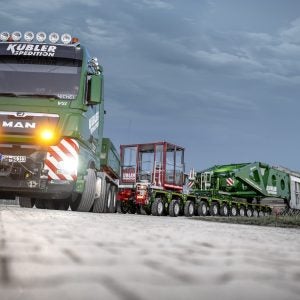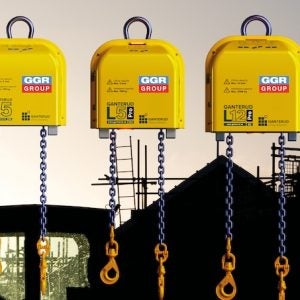The manufacturer said the reason behind its decision to add flat tops to its product portfolio was the increased demand for this crane type by its customers. In regards to the choice of capacity, Jaso said: “The new flat tops fit in a capacity class around 200 tonne-metres, where this size 10t and 12t cranes already represent more than 50% of the market and that is still increasing. At this size the benefits of a flat top design outweigh those of other types.” It added that the new models cover the market between its city crane and low top series.
Both models offer a maximum radius of 67.5m. The J200.12 is giving tip loads of 1.7t with a single trolley in single reeving mode (ST-SR) or 1.5t in a double reeving mode (ST-DR). The J200.10 offers tip load of 1.8t or 2t depending on the reeving mode selected.
Booms on the two new models start at 30m and can be increased in 2.5m increments. Swing radius with the full boom is 14.9m while for booms of 52.5m and lower, the swing radius can be reduced to 12.9m. Counter weight slabs are the lay flat type, the same as the weights of the base ballast.
The J200.12 features 60 hp hoist, giving a maximum speed of 152m per minute. An 88 hp unit is offered as an option, giving a maximum speed of 225m/min. The rope capacity is 1,378m. The J200.10 comes as standard with the 33 hp hoist, with the manufacturer offering the option of a 60 hp one.
Both models use the standard 1.75m x 1.75m tower system with 12, 6 and 3m long sections. Their maximum freestanding height is 50.1m. The manufacturer said it is currently developing the crane to fit the 2.16m tower systems in order to achieve hook heights of nearly 83m. For the base, cruciform types 4.5 x 4.5m and 6 x 6m are offered, for maximum hook heights of 48.1 and 54m, respectively.
When developing these cranes, Jaso paid particular attention to the assembly and transportation process. “For easier assembly the heaviest component is the slewing platform with tower head at 6.7t. Combining these two reduces the number of transport units.”
Among the features of these models is the Eco-mode system, which enables the crane to use 75% of the power normally used. In addition, when switched to the Super Eco mode the crane works with 50% of the normal power consumption. “It allows a crane with a bigger hoist motor to also work on less current. This helps on sites with restricted power supply. Eco and Super Eco modes reduce the hoist speed but only when hoisting up. Lowering the hook is at same speed as when working in normal mode,” Jaso added.






